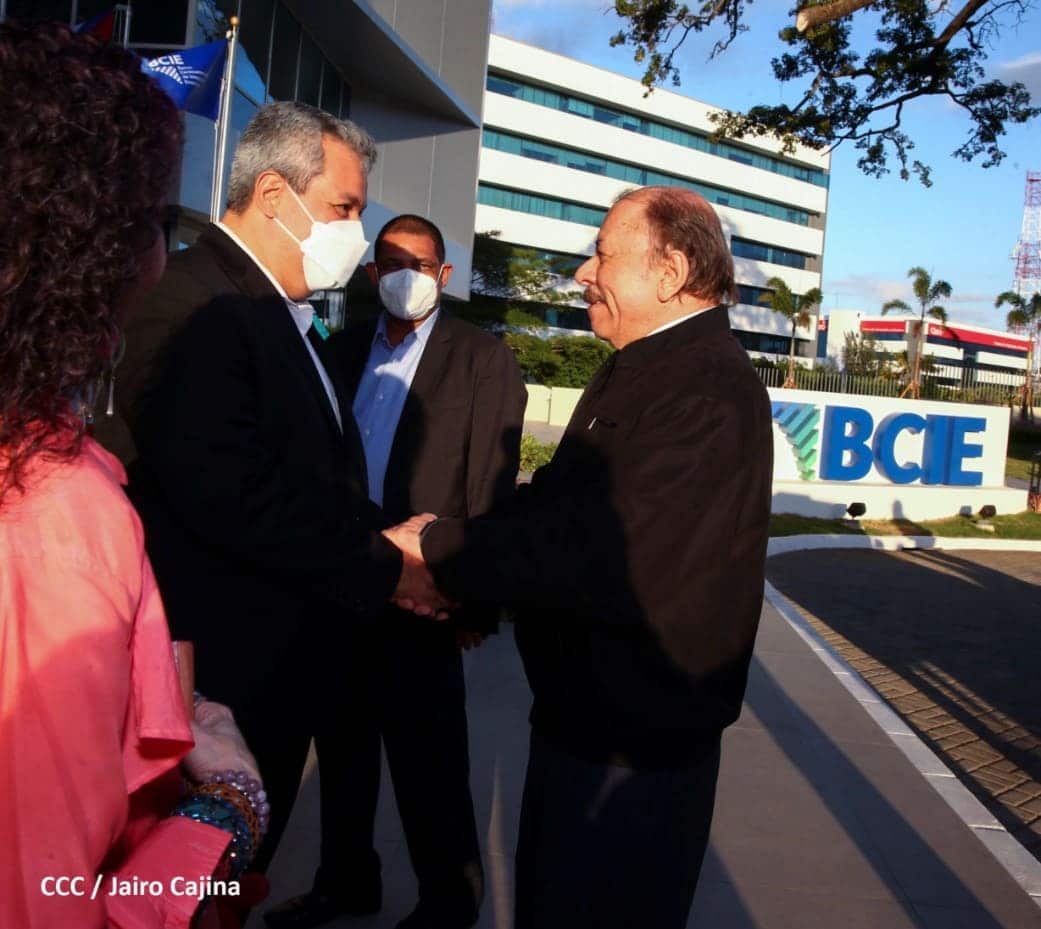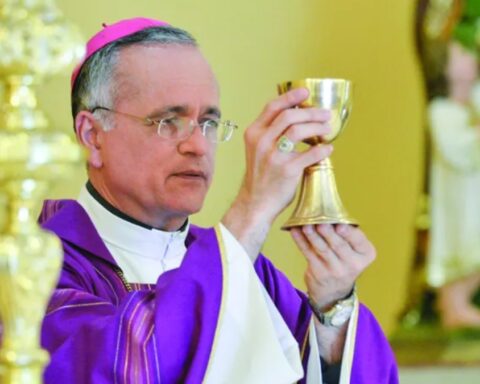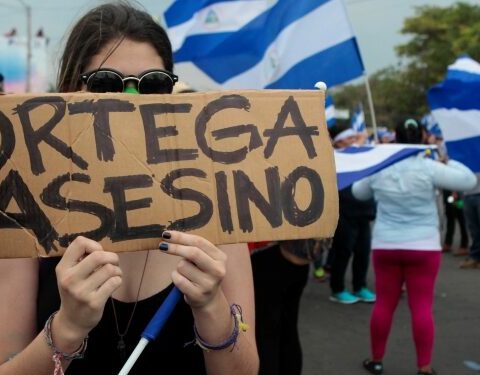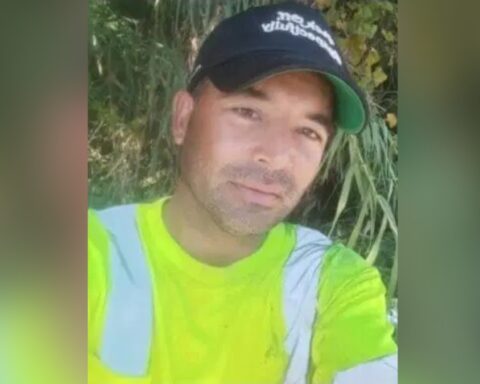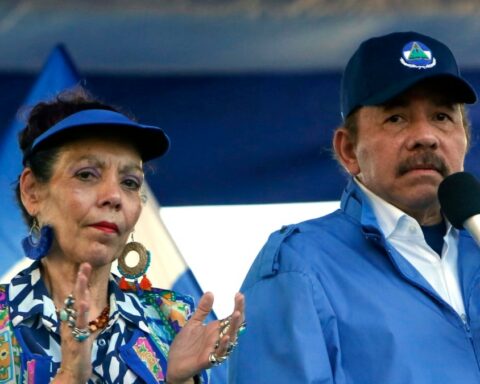The Daniel Ortega regime still has 1.968 billion dollars available in the Central American Bank for Economic Integration (CABEI), of the 3.49 billion dollars that have been approved in recent years, according to data available on the website of the regional organization.
So much ‘generosity’ puts the Bank in a predicament, by concentrating a high percentage of its credits in a single country, a situation that can generate non-conformity in the rest of the partner countries, and lower the risk rating granted by the evaluating companies, consider sources linked to CABEI who spoke with CONFIDENTIAL on condition of not being identified.
After most of the multilateral and bilateral credit providers suspended their operations with Nicaragua, in response to the massacre perpetrated by the Administration of Ortega and Rosario Murillo against citizens who demanded justice and democracy in 2018, CABEI became the main provider of resources for the Government of Managua.
that support has been maintained over the yearss to the point that, of the 3,490 million dollars approved (3,050 million formalized), the Bank has already delivered 1,082 million for productive infrastructure, human development, energy, and the environment, with the remaining 1,968 million for disbursement.
If all these figures are good news for a regime that knows that every day that passes without allowing free elections, restoring public liberties and release political prisoners implies more difficulties to access new sources of resources, that very fact constitutes a problem for the Bank.
As an example, commercial banks established in Nicaragua cannot lend more than 30% of their capital to any of their related parties, which is what the owners of the bank are called. In an entity like CABEI, the same thing happens but on a larger scale, where Nicaragua owns 10.79% of the shares.
The other four founding partners (Costa Rica, El Salvador, Guatemala and Honduras), have the same shareholding, all of which limits the percentages of the total credit that each country can receive, without being in trouble with the rest of the partners, or with risk rating agencies.
Lack of criteria
Although the main defense of the Bank is that it has not established a maximum amount to lend to the countries (because they never determined the criteria to be tabulated to establish that limit), that does not free them from the scrutinizing gaze of the companies that evaluate the risk, nor of the possibility that a country could fall into ‘default’. In particular, one with a political, economic and social situation as delicate as that of Nicaragua, according to three different sources consulted by CONFIDENTIAL.
“The ceiling issue is determined by various factors, but there are no final decisions on that issue yet,” said a senior source, who is familiar with how the Bank makes its decisions.
Paraphrasing an old saying, an academic said that “what CABEI is doing is putting – not all of them, but too many – ‘eggs’ in one basket. And Nicaragua is an unstable basket.”
A financier who knows how multilateral organizations work, reported that “this issue has been discussed for a long time at the Bank, to try to define what is the limit that can be lent to each country, but they have not defined an answer, in part, because it does not depend on a single variable, although a limit has been set for those from outside the region”.
The financier explained that there are several ways –and formulas– to calculate the adjusted risk capital, and determine the Bank’s exposure, including how much is the capital contribution made by the country (and how much has it borrowed), to weight the risk, and determine the amounts that can be lent.
“The resulting percentage has to do with the collateral (the guarantees that a credit applicant can offer); if it is public or private, and in what area it operates, ”he detailed.
Take care of credit scores
An entity like CABEI is, in a certain sense, a cooperative, because the largest shareholders are the main recipients of the credits. This means that the representatives of the owners of the Bank will always be in competition with each other to capture the largest amounts for their respective countries.
In 2020, Honduras had 24% of CABEI’s portfolio and Nicaragua had the lowest percentages, so the ‘country strategy’ defined the objective of capturing up to 18% or 20% of those resources. Meeting this objective allowed Nicaragua’s public external debt to reach 7,616.9 million dollars in the third quarter of 2021, being 660.1 million more (an increase of 9.2%) compared to December 2020, when it was 6,956.8 million dollars.
This occurred at a time when CABEI was trying to diversify its portfolio, to lower it from the 95% that it concentrated among the five founders, to a percentage that ranged between 80% and 85%.
To convince the founding countries to accept this ‘rebate’, the Bank told them that “they are going to have a smaller percentage, but a larger ‘cake'”, because they hoped to be able to capitalize the Bank with the entry of new partners, such as Korea and others, effectively raising the Bank’s capital from $5 billion to $7 billion.
In parallel, the Bank improved its ‘rating’ and that allowed it to offer loans at a lower price. Data from the entity, based in Tegucigalpa, show that between 2016 and 2020 it approved loans for more than 8 billion dollars, although the amounts actually disbursed are always less.
Hence, Nicaragua still has room to request and obtain more loans, although “that depends on what the directors approve, who defend the interests of their own countries”, as well as the fact that having to make greater provisions to support the loans granted, reduces the availability of credit for the rest of the countries, and can lead to a reduction in the rating of the entity, explained the financier.
“When a country has problems, like Nicaragua, the Bank has to make accounting provisions to face the theoretical risk. The greater this provision, the smaller the amount of money available, which decreases the general capacity to grant credit. If you lend more money to that country, the ratings they give you also go down,” he added.
Sell debt in Central America
At the time that Nicaragua exceeds the risk exposure that CABEI can afford, and the Bank is no longer able to meet the promise that its executive president Dante Mossi made to Ortega, of “support you in your projects… listen to your priorities and… attend to those demands as far as we can”, will always remain hethe option of resorting to the Regional Debt Market, that is in the process of being created.
In the words of Mossi, the existence of this instance will allow Nicaragua to finance itself from the Central American market, placing sovereign debt that international capital can acquire, at market prices –and conditions–.
This regional stock market is an idea that has been around since the beginning of the century, and received an important boost in mid-March, when the heads of the Council of Treasury or Finance Ministers of Central America, Panama and the Dominican Republic (Cosefin) chose El Salvador –through the Ministry of Finance– as the host country of the project.
“I have spoken with several colleagues from Central America, and we do not understand what they mean when they speak of a ‘headquarters’ for that regional market, because it does not need it,” said a stock operator who preferred to share his opinion without being mentioned by name. . “It gives me the impression that it is more than what they sell,” he said. The source was skeptical about what Cosefin is doing, whose stated intention is to create “a Securities Compensation, Settlement and Custody Mechanism, serving as a platform for the integration of regional public debt markets,” according to its website. .
The usefulness of this mechanism is that, “when an investor wants to buy debt, the money can be transferred safely, and it allows fluidity in the execution of operations, but they are just making the business plan, so that will take about two years more”, added the stock operator.
The cost of being unreliable
The aforementioned financier adds that “what is intended to be developed is a ‘Central American stock market’ that would begin its field of action with public debt securities, in order to be able to trade them more quickly in a single place.”
“Although it is an important step that expands the market – and can provide some liquidity – in the end, what the countries are going to do is make their own public debt bonds available to buyers, with the individual risks of each country. It would be better if a Central American issue could be made, but the problem is always how to specify a regional sovereign guarantee. That would be a great advance, “he added.
However, if each country goes to that market to offer its debt, the question arises as to who will want to buy the bonds issued by the Ortega regime, discredited after being re-elected with another electoral fraud, without access to fresh resources from the international financial community. , and with an economy –and an internal market– with very limited capacities.
Under these circumstances, countries with more stable and buoyant economies, such as Costa Rica, Panama and Guatemala, could find resources with attractive interest rates of 6% and 7%, while Nicaragua would have to pay between 10% and 15% to find who would buy his debt, second only to El Salvador, which should pay about 16%”, calculated the financier.
In this regard, Gerardo Argüello, manager of the Nicaraguan Stock Exchange, points out that “Nicaragua’s record is excellent,” and that “there has never been a delay in the payment of government securities.”
“It should be noted that a debt as important as the Compensation Payment Bonds, which reached 1.2 billion dollars, has already been honored almost in its entirety. The current levels of indebtedness through bonds are much lower than in previous years, with a much higher economy and GDP”, he pointed out.
Argüello knows all this because “Nicaragua’s public debt is traded daily on the Stock Exchange and is placed through auctions organized by the Central Bank. On our website we publish the yields for the different terms. As an example, in February of this year, the yield in córdobas with value maintenance, at a term of 540 days (year and a half) stood at 6.50%, while in dollars at three years, it paid 7.50%, “he explained.

